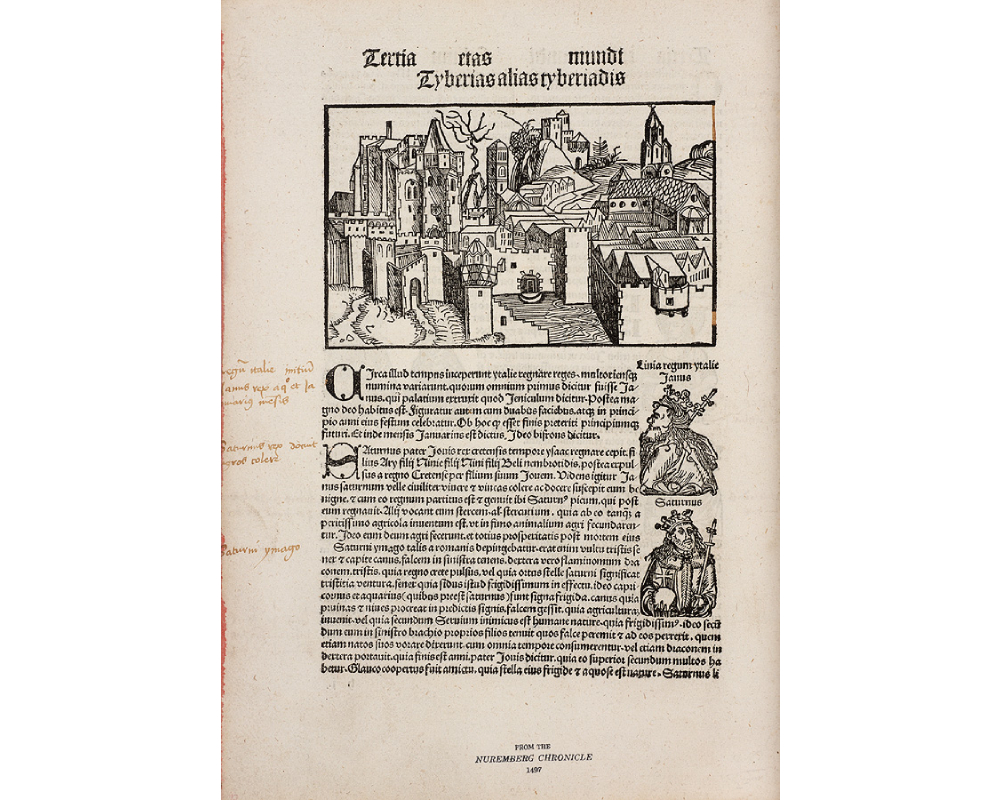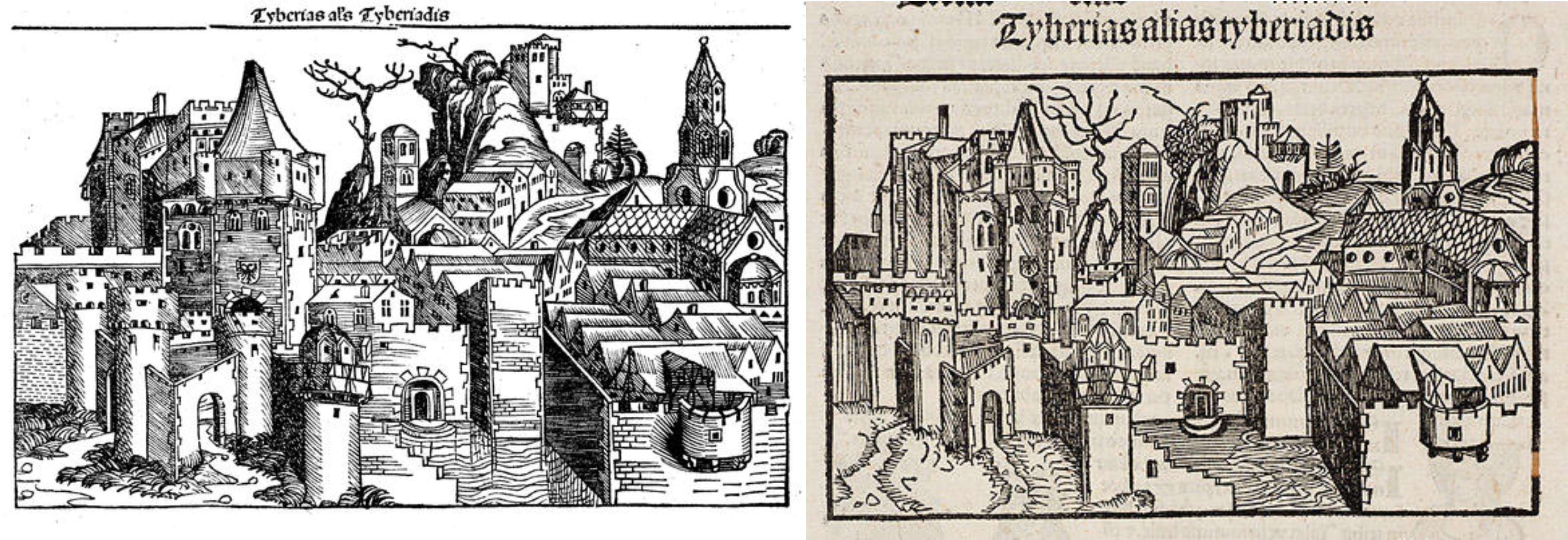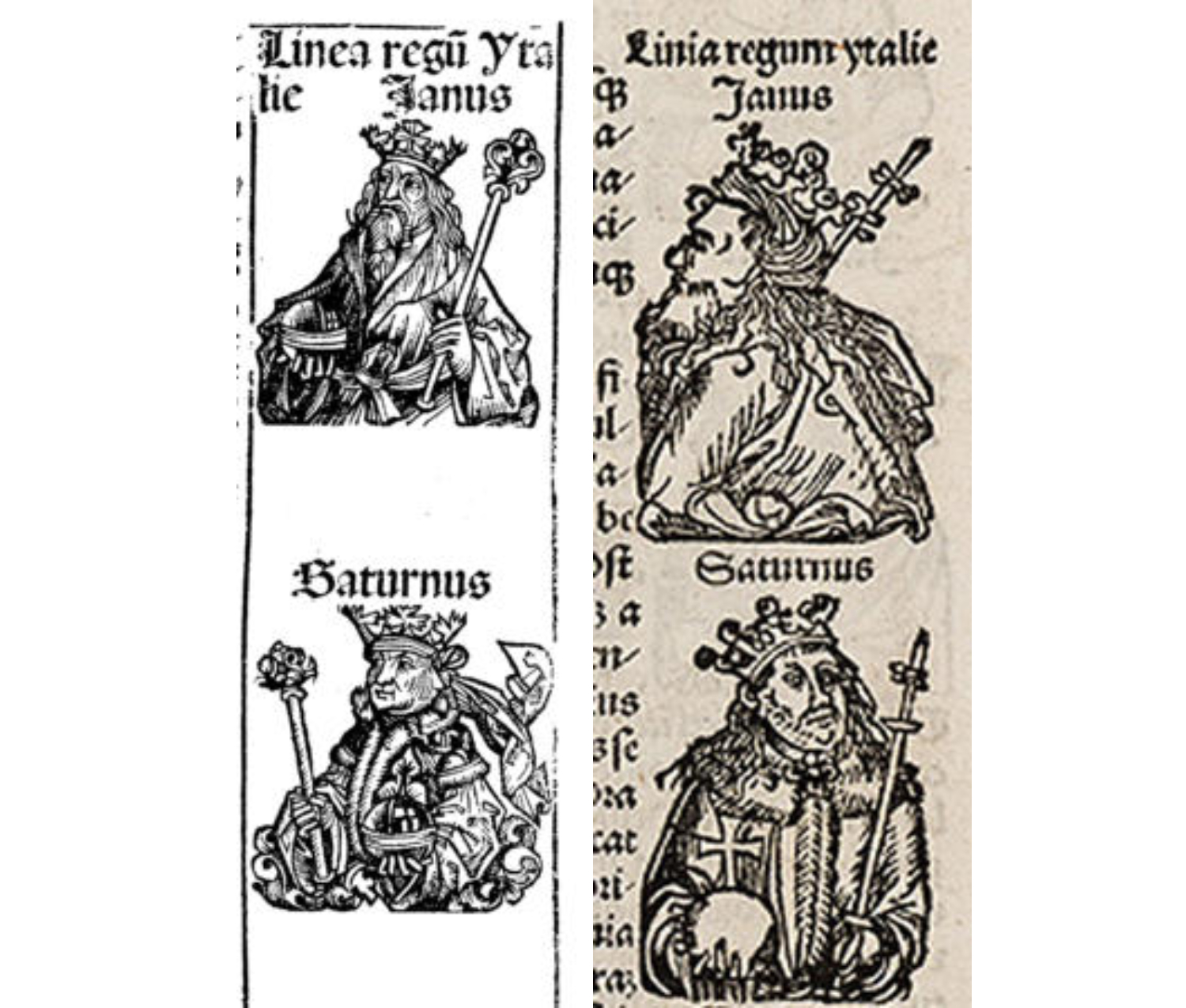
Literary "Piracy" in the Fifteenth Century
Colleen McDermott is the Brown Post-Baccalaureate Curatorial Fellow in the Cunningham Center.
The Smith College Museum of Art is dedicated to bringing out works on paper into the main galleries, where all visitors can see them. Since works on paper are more sensitive to light than other mediums, SCMA has installed special Works on Paper cabinets throughout the galleries for the display of prints, drawings and photographs. Today’s post is part of a series about the current installations of the Works on Paper cabinets, which will remain on view through April 2016.
The Nuremberg Chronicle was enormously popular; however, it was also very expensive, because of its size and the number of illustrations. In the neighboring town of Augsburg, a rival printmaker named Johann Schönsperger sought to reach a new market—middle-class people who wanted printed books but could not afford the ones being produced at the time.
Schönsperger made a reproduction of the Chronicle, but with a number of cost-cutting measures that made it accessible to the masses. The text was nearly identical to the original edition, but with more abbreviations and fewer, less detailed illustrations. The book itself was also significantly smaller, and printed on poorer quality paper. This adaptation was perfectly legal, since fifteenth-century Germany did not have the concept of copyright or intellectual theft as they are known today. In fact, much of the text of the original Nuremberg Chronicle was taken word-for-word from other classical and contemporary writings.
These shortcuts, however, had consequences for the book’s long-term survival. Despite being produced in much larger quantities, there are fewer remaining copies of the pirated edition than the original.
When comparing the image of the city of Tyberias from the pirated edition of the Nuremberg Chronicle with the image from the original (reproduced below), there is a notable difference in quality. The buildings in the pirated edition have no brickwork or shading, and seem to be hastily rendered. To fit the same images in a smaller space on a smaller budget, details clearly had to be sacrificed.
Here are the images from the pirated edition place side-by side with those same images from the original. I encourage everyone to look closely and spot the differences!

Detail of Tyberias als Tyberiadis (original left, pirated right)

Detail of kings Janus and Saturnus (original left, pirated right)
Selections from the Nuremberg Chronicle are currently on view on the second floor of the Museum. They will remain on view through mid-April 2016.